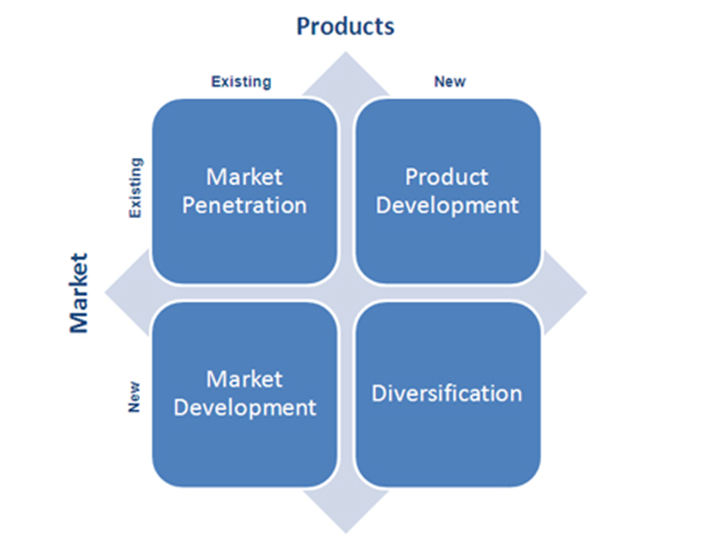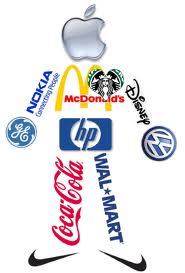Marketing

Completing the Marketing Design and Innovation module and report has been a great learning opportunity for me in many levels. Thanks to this module I obtained an in-depth knowledge about the main features of product and service design from marketing viewpoint, in both theoretical, as well as, practical levels. The contents of the module and an effective teaching style of the tutor have played an instrumental role in assisting me to distinguish between the key characteristics of the designing process within the settings of ever-changing consumer taste and highly dynamic nature of style. Moreover, Marketing Design and Innovation module has taught me the importance of patenting ideas, registering designs, and safeguarding own intellectual property in a timely and appropriate manner. Also, I do believe that a set of organisational theories and business frameworks that I learned in this module will find their application in the future, to contribute to the achievement of my career objectives. The experience of attending the module and completing the report has equipped me with ideas about innovation and design. At the same time, I had a set of pre-conceived ideas about innovation and design that have changed as a result of completing the module and preparing the report. Specifically, previously I did not fully appreciate the importance of introducing innovations in various aspects and features of products and services in regular manner. However, towards the end of the module I became convinced that introduction of regular innovations in various aspects and features of products and services has become one of the basic survival requirements in modern highly competitive marketplace. Similarly, a highly dynamic nature of design can be specified as another point that I learned during the process of completing the module and preparing the report. I have to admit that the process of completing…

Ansoff Growth matrix assists businesses to increase their revenues by offering four different growth options depending on products and markets. According to the matrix market penetration is a type of growth where the company attempts to increase the level of sales of existing products into current markets. Product development growth strategy, on the other hand, involves introducing new products into current markets. A situation where a business enters new market with its existing products is marked as market development growth strategy. Diversification growth strategy can be achieved through offering new products into new markets. For example, this principle is followed by Warner Bros., although the extent of utilisation of each individual growth strategy varies. Warner Bros. uses market penetration and product development strategies in the US in particular through periodically introducing popular entertainment shows. Due to the following to this strategy for the season of 2012 – 2013, Warner Bros. Television has accounted for more than 30 per cent of top shows on broadcast TV in the US (Annual Report, 2013). Acquisition of 55 per cent of Shed Media plc, one of the leading entertainment firms in the UK for USD 100 million in 2010 (Annual Report, 2013) can be referred in order to illustrate market development strategy of Warner Bros. Diversification strategy, as discussed above is engaged by Warner Bros. in relation to quality of content and the manners of delivery and consumption of films and entertainment products and services. References Annual Report (2013) Time Warner

Porter’s generic strategies are one of the most popular tools used when undertaking a competitive analysis in any industry. According to Porter (1985) companies can generally choose from two broad strategies, product differentiation or cost efficiency in broad market scope, or they may pursue product differentiation or cost efficiency strategies within a particular customer segment. To put it simply, companies usually choose to maximise their profit through offering products or services in lower prices, or offering superior quality products or services for higher price. And this can be done for the whole business or for a particular customer segment. A focus strategy “is defined by its emphasis on a single industry segment within which the orientation may be toward either low cost or differentiation” (Czinkota and Ronkainen, 2007, p.196). When pursuing a cost leadership strategy the company prices its products or services at a lower level than competition. Cost leadership strategy is associated with engagement in economies of scale and maintaining strict control of costs. Differentiation strategy, on the other hand, focuses marketing efforts on quality and uniqueness in relation to specific aspects of products or services. There are many advantages product differentiation strategy provides to the business. Product differentiation strategy increases the level of customer loyalty dramatically by mentioning the statistical data according to which US consumer loyalty to a single brand varies from 30 percent in batteries up to 70 percent in cigarettes. When conducting competitive analysis companies should seek following information: current strategy and future objectives of competitors, assumptions about the industry in which competitors believe, and strengths and weaknesses of competitors. Example: Application of Porter’s Generic Strategies to Warner Bros. According to Porter’s generic strategies differentiation in broad competitive scope marks the main competitive advantage of Warner Bros. The company engages in diversification in two levels:…

Attendance of the module and completion of the report has deepened the level of my knowledge in a number of areas. First of all, I learned about the importance of branding from practical and theoretical viewpoints. Moreover, I learned about the potential contribution of effective product design and innovation in products design and its key features in successful branding. During the research process for the report I gained an in-depth knowledge about all stages of the designing process of products and services. I feel very optimistic about applicability of this knowledge in practice in the future as a manager. My knowledge has also increased in the areas of patenting, trademarks and protection of intellectual property. Studying a set of case studies from IMSS has helped me to learn about the types current global trends and assess their implications on businesses within the settings of real life business situations. The module and assessment gave me some ideas about innovation and design. Before attending the module and completing the assessment I thought of design as a static issue and did not duly understand its highly dynamic character. However, thanks to effective teaching method of the tutor, adequate materials and individual learning efforts, now I do understand that product design needs to be perceived as an integral component of new product development efforts and design needs to be based on appropriate integration of simplicity and convenience. Moreover, central idea of the module has been associated with innovation in product design and functionality as a source of competitive advantage and I have obtained an in-depth knowledge about the value of innovation in product design and functionality to be used in the future during my career. The role of branding and effective marketing communication is another area of knowledge that I have gained through attending…

Brands operating ecotourism services can be divided into two categories: brands offering ecotourism services as the only type of service and brands that offer ecotourism along with alternative types of tourism. Communication and branding are critical success factors for new product development. However, communication and branding efforts directed towards ecotourism can be vastly different compared to communication and branding efforts associated with many other products and services due to a set of unique aspects of ecotourism. Usually, ecotourism brands position their services as nature related tourism. Major ecotourism brands aim to target their customer segment though communicating their marketing message via various channels. Generally, profile of ecotourists in Europe can be described as middle-age to elderly experienced travellers who are opinion leaders with high education and within higher income bracket (Global Ecotourism Factsheet, 2006). Major ecotourism tour operators in the UK targeting this customers segment include Travel Corporation, Thomas Cook Group plc, TUI Travel plc, Acromas Holidays ltd, Trailfinders Ltd, Holidaybreak Ltd, Portman Travel Ltd and others. The most popular ecotourism destinations include Annapurna area in Nepal, Mayan sites in Belize, Galapagos Islands, Kenya, Australia, Peru, Brazil, South Africa and others. Competition in Ecotourism Competition in ecotourism is intense with tour operators if various sizes competing with each-other. According to the World Tourism Organisation (WTO) the number of international tourist arrivals exceeded one billion in 2012, and it is forecasted to reach 1.8 billion mark by the year of 2030. Company name Number of outlets % share of outlets Thomas Cook 777 19.0 CGL 360 8.8 Midlands 102 2.5 TUI 866 21.2 Flight Centre 90 2.2 Bath Travel 65 1.6 STA Travel 51 1.2 Hays Travel 44 1.1 CGL managed services and franchises 40 1.0 Other ABTA outlets 1385 33.9 Non-ABTA outlets 267 6.5 Travel agencies in the UK…

Generally, design can be defined as “realisation of a concept or idea into a configuration, drawing, model, mould, pattern, plan or specification (on which the actual or commercial production of an item is based) and which helps achieve the item’s designated objectives” (Business Dictionary, 2014, online). Design of products and services is a separate science in marketing to be approached in a serous and responsible manner. Design process for new products and services involve the stages of initial research, concept formulation, initial design, development, construction of a prototype, engineering, and production. However, the extent of applicability of design process described above is highly limited towards ecotourism primarily due to the fact that it is highly difficult to develop new ecotourism destinations from the scratch. Accordingly, the key features of design elements of ecotourism are vastly different from the key features of design elements of the majority of products and services. Key features of ecotourism design elements can be specified as genuineness of nature environment, specific wildlife, pure ecosystem with accessible interpretation trails, level of excitement of its nature phenomenon, ecolodge, cultural immersion of local people, and historical heritage. The level of relevance of these key features to customer needs is discussed in the following part of the report. Ecotourism Design Elements and Customer Needs The following table illustrates the relevance of ecotourism design elements to customer needs: Key features of ecotourism design Discussions Genuineness of natural environment Ecotourists have high levels of interest in genuine nature places such as forests, national parks, marines, etc. Specific wildlife Higher levels of wildlife such as animals living in a free habitat have serve as effective attraction for ecotourists Ecosystem Ecosystems can be explained as self-sustaining communities within natural settings (Schmitz, 2007) and they represent a major point of interest for ecotourists Ecolodge…

Tourism is one of the largest industries in the global scale and its increasing popularity has resulted in emergence of independent forms of tourism such as leisure tourism, business tourism, sports tourism, medical tourism, ecotourism, food tourism, religious tourism etc. Ecotourism can be defined as “tourism to places that is designed to the protection of the environment or at least minimise damage to it, often involving travel to areas of natural interest in developing countries or participation in environmental projects” (Dictionary Reference, 2014, online). Ecotourism is also known as ethical tourism, ecological tourism and nature-based tourism. Main differences of ecotourism from traditional tourism relate to travels only to natural destinations, constructions of environmental awareness, reducing detrimental impacts of tourism to the local communities and the environment, and respect for local cultures. Benefits of Ecotourism Understanding differences between customer needs and wants in an appropriate manner is important in order to fully appreciate the benefits of ecotourism to customers. Needs are essential for people for physical and social survival and they include food and water, clothing, accommodation, security, communication, love etc. Wants, on the other hand, can be explained as “the cultural manifestation of those needs” (Andrews, 2007, p.72). In simple terms, both, highly educated individuals with substantial income and floor-level factory employees with minimal income have a need for adventure and recreation. However, while highly educated individuals with substantial income might want to satisfy this need by engaging in ecotourism, floor-level factory employees with minimal income might want to satisfy the need for adventure and recreation by only attending a local park. There are various benefits of ecotourism to individuals engaged in ecotourism, to host destinations of ecotourism, and to the society and environment in general. Ecotourism offers a set of advantages to customers, i.e. individuals engaged in ecotourism…

Design can be explained as the process of giving something a deliberate aesthetic form. Design of mobile phones is one of its primary success factors. Key features of a mobile phone design elements may relate to physical design of the handset, user input, mobile context, usability of the devise, design of content and others. Portability marks one of the most important features of design elements of mobile phones. Finding an effective balance between portability and usability is one of the most challenging tasks for modern mobile handset designers. On one hand, customers expect conveniently usable keyboards and wide screen sizes from modern mobile phones so that the device can be used with no or minimum strain eyes. On the other hand, designing large keyboards and enlarging screen sizes in a mobile phone can only be achieved by enlarging the physical size of the devise with negative implications on its portability. Therefore, designers of mobile phones need to find an effective balance between usability and portability. Generally, The design process of a mobile phone may include the following stages: 1. Design brief. This initial stage in mobile phone design process involves the formulation of initial ideas for the design. Initial ideas for the design may be obtained from customer feedback of the previous models or changes in the marketplace associated with innovation or breakthrough. 2. Product design specifications stage relates to the market research and analysis of the problem. During this stage data related to customer needs and wants in relation to mobile phone designs are going to be collected and analysed. 3. Concept design is a stage in design process where outlines of key features of the design are developed. For a mobile phone concept design may include specification of the size of the screen, size and form of buttons,…

The primary, traditional benefit of mobile phones can be specified as being able to engage in conversation with other people. However, benefits offered by mobile phones have been extended mainly during the past two decades to include communication through texting, recreation through games, taking pictures and videos, browsing internet etc. The primary benefits of mobile phones that relates to serving as a communication platform, has traditionally facilitated the communication through phone calls and text messaging. However, thanks to the internet browsing capabilities in modern mobile phones, communication can also be facilitated through e-mails, chats and video calls. Increasing levels of capabilities of advanced mobile phones in terms of taking pictures and videos are causing mobile phones to impose direct competitions to manufacturers of cameras and camcorders. This fact can be pointed to as another substantial benefit of mobile phones. Moreover, internet browsing capabilities of mobile phones have substantially increased the range of their benefits to offer the possibilities of shopping, reading news, listening to music and watching films online, working with spreadsheets, and even serving as a wallet to purchase products and services offline. To summarise the point, mobile phones have become an integral part of daily life for most people to such as extent that they cannot imagine their life without this product. Mobile Phone Value to Customers Value proposition of mobile phones to customers are significant and this value is associated with serving as an effective communication tool through several mediums such as phone calls, text messages, e-mails and video calls, recreation, making purchases, working etc. It is important for mobile phone manufacturers to be able to distinguish between customer wants and needs in order to be able to achieve long-term growth. Customer need is associated with specific functional or emotional benefit or the product that customer…

A wide range of factors have impact upon a brand than a business strategy and generally these factors can be divided into two categories: internal and external. Internal factors affecting brand include business strategy, internal conventions, brand legacy marketing mix and marketing implementation. External factors, on the other hand, include, but not limited to category, cultural, and needs conventions. Crossan and Apaydin (2010) confirm this viewpoint and specify core elements of the brand as expression, perception, and recognition that are subjected to the impact of internal and external factors specified above. Moreover, Fog et al. (2010) argue that regardless of industry and nature of the business brands cannot exist independent of the company, its organisational culture, suppliers, distributors and buyers, at the same time specifying these elements as factors affecting branding aspect of the business. It has been argued that “it can be easier to establish a new brand if there is a history of product or service experience which has already earned trust and credibility” (Davis and Baldwin, 2006, p.29). However, Alessandri (2009) offers an alternative viewpoint claiming that the level of effectiveness of branding strategy depends upon the quality of brand identity, the choice and the level of implementation of communication channels to promote the brand, and the quality of products and services above all. The personality of CEO of the company is considered to be another major factor affecting brands and branding initiatives by Fioroni and Titterton (2009). Moreover, the issues of brand personification have been explained by Fioroni and Titterton (2009) by referring to the example of Virgin Group, where it’s CEO Richard Branson has successfully established himself as a core of the brand. A wide range of secondary data authors share their viewpoints in terms of improving brand image and value in a global scale.…
